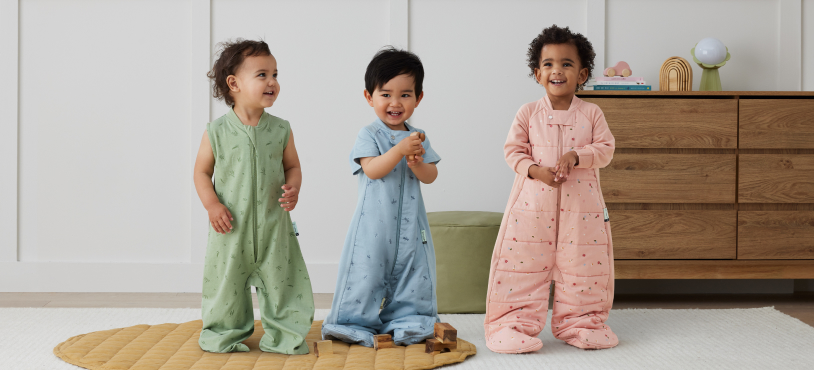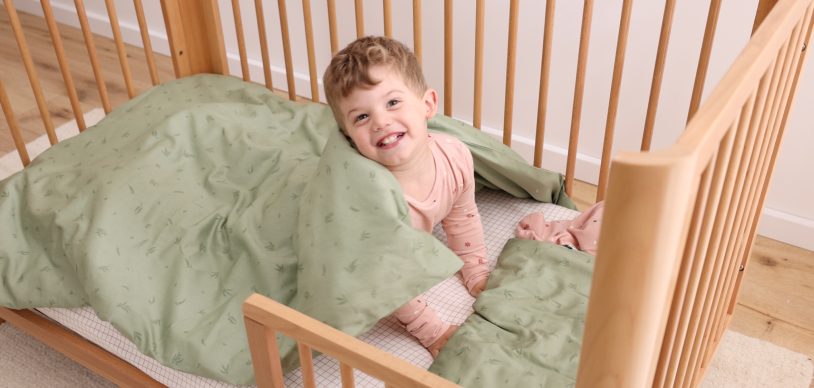The following article has been written for ergoPouch by registered pediatric psychologist, Amanda Abel (BsocSc, BAppSc(Psych)(Hons), MAPS, MAAPi). Amanda practices in Melbourne, Australia at the Centre for Child Development.

Sleep challenges in children can literally be a nightmare (excuse the pun!) for parents. Handling the endless requests to quench that sudden thirst that seems to emerge just as youve left their bedroom each night, or even managing the behaviors in the lead up to bedtime “ is exhausting for parents. However, this is a battle worth pursuing. Sleep has a significant impact on a childs development and behavior. In fact, children who are sleep deprived can present with what look like persistent and significant behavioral disorders “ yet these can disappear once the sleep problems have been addressed.
Here are some of the most common preschooler and toddler sleep issues and challenges Ive come across as a pediatric psychologist over the past decade or so, with some ideas to try to help kids sleep better...
Download our Quick Sleep Tips Guide to stick to your fridge if you need a daily helping hand, or read on for all the details.
Tips for common sleep issues in toddlers and preschooler kids
What to do when children bring up their ˜worries just as youre putting them into bed
Firstly, this is not the time to be addressing worries, or anything thats going to stimulate the mind. Be proactive and set up ˜worry time earlier in the day to talk to your littlie about anything thats on their mind. With young children, using tools like drawing or doll play is an effective and non-confrontational way for parents to learn more about whats on their childs mind. If your child raises some worries at bedtime, tell them youll make a note about it, and you can speak about it at tomorrows ˜worry time.
How to manage the change to Daylight Saving
In the lead up to time zone changes or the start and end of Daylight Saving, consciously adjust your childs bedtime ever so slightly over a period of a week or so. This gets them closer to the ˜new time which makes the transition easier. Also, when its bright outside in the evenings, it can help to darken the house by putting the blinds down and turning on dim lamps to give the house a more ˜night-time feel during Daylight Savings and to ensure the natural rise of melatonin can occur to assist with sleep onset.
What to do if your child complains of being too hot or cold
Make sure the environment is conducive to sleep. They should be wearing sleepwear that is suitable for the weather (not too heavy or too light), their bedding needs to be appropriate for the room temperature and the bedroom should be somewhere between 65F and 68F degrees.

What to do when your child is anxious about bedtime
A night-time routine is essential for many reasons “ and managing anxiety is just one! Think of this more in terms of it being a ˜ritual and less associated with specific timing. Predictability, routine, and functional rituals can decrease anxiety “ so when our children know that the same thing happens each night before bed, they dont have to worry about whats coming up next. It also makes it easier for parents to manage behaviors that dont fit in with the routine “ theres less ˜wriggle room.
If your child shows controlling behaviors like dictating which parent should put them to bed
If your child shows controlling behaviors at bedtime, make sure you stick to a predictable bedtime routine, but exercise a small amount of flexibility with the routine so that your child doesnt become rigid. Adding in changes like which parent helps the child or performing the routine in new places like grandparents houses will encourage more flexibility in this ritual.

How to manage it when your child calls out to you from the crib or keeps getting out of bed once youve said ˜good night
This can be about testing the boundaries but also about simply wanting to spend more time with you “ because youre amazing of course! Ensure youre spending a good amount of quality time together each day so that your childs ˜cup is filled and presents fewer opportunities for toddler sleep issues at night. You can also set up small rewards that can be given in the morning if your child goes ˜straight to sleep at night. Reward ideas could include a special breakfast, extra screen time, or a little prize like a sticker or small merchandise that relates to their areas of interest.
How to handle it when your child wakes up cold in the night
If your child is a restless sleeper and throws the blankets off at night, consider a sleep sack thats at the correct weight for the weather and room temperature. This way they wont get cold and wake themselves up! Otherwise, try adjusting the temperature of the room so that it is less noticeable if the blankets come off. Also pop in and check on them before you go to bed to ensure the blankets are as secure as possible.

What to do when your child has a meltdown about the transition from ˜fun to bedtime
This is one of the most common causes for sleep issues in kids and is one of the reasons I like to recommend no screen time in the lead up to bedtime! However, transitioning from a fun activity to something non-preferred can be tackled a couple of ways. Firstly, you can add in a ˜transition activity so that youre going from something fun (TV), to something less fun but still preferred (play doh), before eventually transitioning to bed. This lessens the sudden blow of transitioning from super fun to super bad! Secondly, you can make bedtime more enjoyable for your child by adding in elements of highly preferred activities or interests. For instance, build in one-on-one time to your bedtime routine with a special sleep-related activity you can do together (reading a book, saying affirmations, meditation etc.). Or, if your child is particularly interested in a tv character, get sleepwear or bed linen with that character on it to increase motivation.
The night-time routine is a really beautiful time to connect with your child. Its a great time to tell your child how much you love them/how proud you are/ask them what was amazing about their day and perhaps discuss something to look forward to tomorrow. If you have concerns about your childs sleep or are experiencing preschooler or toddler sleep issues, get in touch with a pediatrician or psychologist who have experience with childhood sleep problems.
Amanda Abel
Pediatric Psychologist
Registered pediatric psychologist, Amanda Abel (BsocSc, BAppSc(Psych)(Hons), MAPS, MAAPi). Amanda practices in Melbourne, Australia at the Centre for Child Development.